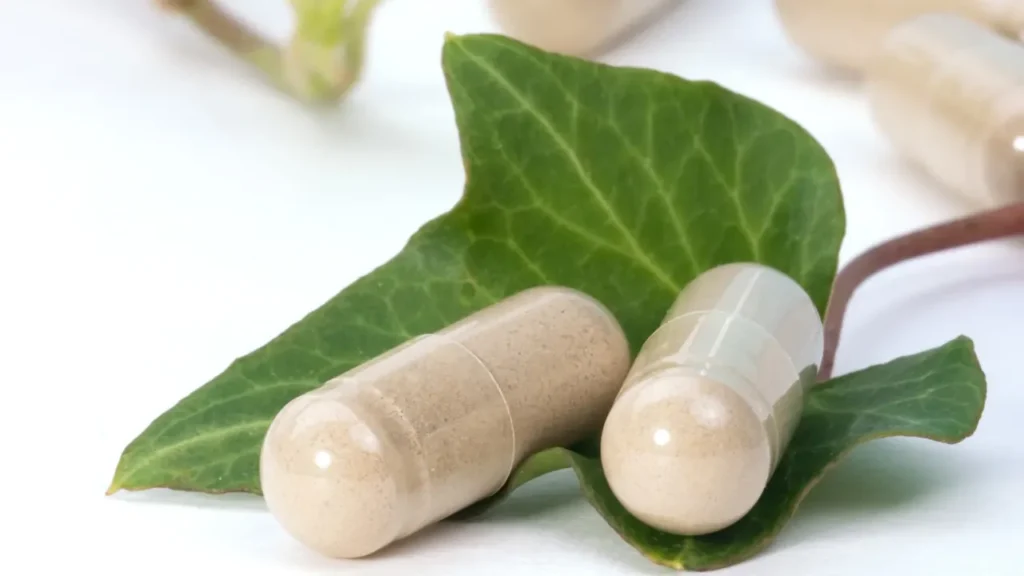Collinsonia canadensis, the scientific name for stone root, is a perennial herb that is native to North America. It is especially common in the damp wooded regions of the Eastern United States and Canada. This plant is well-known for its little yellow blooms and large, lemon-scented leaves. It has a long history of use in traditional medicine to treat a wide range of illnesses. The plant’s hard, rock-like rhizomes, which contain the majority of its medicinal properties, are the source of its common name, stone root. This article explores the characteristics, health advantages, recommended dosage, side effects, possible drug interactions, and other important details of using stone root as a nootropic supplement to improve attention, alertness, and cognition.
You May Also Like:
5 Great Nootropic Herbs for Energy, Focus, and Productivity
A Nootropic Herb for Cognitive Enhancement: Discover Bacopa Monnieri Benefits and Side Effects
Stone Root: Benefits, Dosage, Side Effects, Drug Interactions, and Other Important Information is an original (NootropicsPlanet) article.
Nature of Stone Root
The perennial herb known as “stone root,” or Collinsonia canadensis, is indigenous to eastern North America. It bears distinctive lemon-scented leaves and clusters of small, yellow flowers during its blooming time. It grows well in the wet, shady conditions of forests. The plant’s name refers to its rocky, dense rhizomes, or root systems, which hold its most powerful medicinal compounds. The sturdy nature and possible therapeutic effects of stone root are symbolized by its adaptability to its surroundings and the resilience of its root system.
Health Benefits
The health benefits attributed to stone root span various aspects of traditional and potential medicinal use, emphasizing its role in enhancing cognitive functions and treating physical ailments:
Cognitive Enhancement: Although there is little research, stone root is thought to improve cognitive abilities like memory, focus, and alertness. Its chemical components, such as flavonoids and rosmarinic acid, have antioxidant properties that can shield neurons from oxidative stress, a major cause of cognitive impairment. Furthermore, these substances’ anti-inflammatory properties might help lower brain inflammation, which can enhance cognitive function and fend off neuro-degenerative illnesses.
Gastrointestinal Health: Traditional medicine has long used stone root to treat gastrointestinal problems. Its tannins and saponins help with irritable bowel syndrome (IBS), diarrhea, and other digestive tract ailments by lowering inflammation and soothing the digestive system. Additionally, its astringent properties help to lessen stomach pain.
Venous Health and Hemorrhoids: Hemorrhoids and varicose veins have been treated historically with this plant. Stone root’s tannins have the ability to tighten mucous membranes, enhancing venous health and lessening hemorrhoid symptoms including discomfort and edema.
Urinary Tract Health: Stone root is thought to help the urinary system by easing the symptoms of urinary tract infections (UTIs) and possibly lowering the chance of stone formation. Its diuretic properties can help eliminate toxins, improving the health of the kidneys and bladder.
Anti-inflammatory Properties: In addition to its benefits for the digestive system and brain, Stone root has broad anti-inflammatory properties that suggest it can be helpful for inflammation-related illnesses. This can encompass inflammatory ailments of the skin, joints, and lungs.
Antioxidant Effects: Stone root’s antioxidant content can provide defense against free radical-induced cellular damage. This characteristic can improve general wellbeing, lower the risk of chronic illnesses, and lengthen life expectancy in addition to supporting cognitive health.
Stone root offers a broad range of health advantages, from improved digestion and cognitive function to vein health and other areas. Its promise is shown by its application in conventional medicine, but additional study is required to understand and confirm these advantages.

The Chemistry of Stone Root
Stone root’s main ingredients are flavonoids, tannins, saponins, and rosmarinic acid. A key component of the plant’s medicinal activities is rosmarinic acid, a substance with anti-inflammatory and antioxidant properties that are present in many different plants. Tannins are polyphenolic chemicals that help give the plant its astringent properties. With their surfactant qualities, saponins aid in the plant’s advantageous actions on the mucous membranes of the body. The antioxidant activity of flavonoids contributes to the plant’s overall health-promoting effects.
Physiological Properties of Stone Root
Stone root’s complex molecular composition, which has a wide-ranging influence on the body, especially the brain, is responsible for its nootropic benefits. The protective effects of rosmarinic acid and flavonoids against oxidative stress, a major contributor to cognitive loss, are vital for neuronal cells. Furthermore, these chemicals’ anti-inflammatory properties help to lessen brain inflammation, which is connected to a number of neuro-degenerative illnesses and cognitive deficits.
Furthermore, stone root’s saponin content can improve blood-brain barrier permeability, enabling the effective transfer of its bio-active ingredients to the brain. This can increase the supplement’s ability to improve cognitive function. In order to completely understand stone root’s impacts on brain health and cognition, more scientific research is necessary to determine the precise biochemical processes through which it exerts its nootropic benefits.

Optimal Dosage
The absence of standardized extracts and the variation in individual reactions make it difficult to determine the ideal dosage of stone root for nootropic applications. The existing literature and conventional practices recommend a variety of dosages; however, the most popular range is 300–600 mg of the dried root extract daily. To determine the most suitable dosage depends on a person’s needs and health situation, and it is imperative to speak with a healthcare professional prior to beginning any new supplement, especially stone root.
Side Effects
When used in moderation, stone root is usually regarded as safe. However, in sensitive individuals, it may produce gastrointestinal discomfort, such as nausea or diarrhea, due to its strong effects on the gastrointestinal system and mucous membranes. The likelihood of side effects can rise with prolonged usage or large dosages, which emphasizes the significance of following prescribed dosage guidelines and keeping an eye out for negative reactions.

Potential Substance Interactions
Due to its tannin concentration, stone root, like many supplements, can interfere with some drugs, especially those that have blood-thinning effects. To prevent any potential interactions or cumulative effects, it is also advised to use caution while mixing stone root with other nootropic substances or drugs that impact cognitive functioning. It is crucial to speak with a healthcare professional to avoid any negative interactions, particularly for those who are using prescription drugs.
Responsible Use
When using stone root as a nootropic supplement, it’s important to follow dosage recommendations, be aware of any interactions and side effects, and take specific medical circumstances into account. In light of the paucity of comprehensive scientific research on the effectiveness and safety of stone root, those considering using it to improve their cognitive health ought to proceed with caution. To guarantee its safe and efficient use, it is imperative to continuously monitor both its positive and negative effects.
Stone Root:
Conclusion
Stone root, derived from the root of the Collinsonia canadensis plant, is an herbal supplement with a history rooted in Native American medicine. Although scientific evidence remains limited, it is believed to offer several health benefits. Notably, stone root can aid in treating hemorrhoids, thanks to its potential saponins and flavonoids content. Additionally, recent research suggests that its anti-inflammatory compounds could play a role in managing Alzheimer’s disease. Furthermore, stone root is reported to enhance urine flow, relax ureters and urethra, and alleviate pain associated with passing kidney stones. While more research is needed, this herbal remedy continues to intrigue with its potential health-promoting properties.

References:
- Stone Root – Uses, Side Effects, and More. Retrieved from:https://www.webmd.com/vitamins/ai/ingredientmono-89/stone-root
- Nootropics – Stone Root: https://www.ncbi.nlm.nih.gov/pmc/articles/PMC10056569/
- Stone Root Health Benefits: https://www.planetayurveda.com/stone-root-collinsonia-canadensis/
Important Note: The information contained in this article is for general informational purposes only, and should not be construed as health or medical advice, nor is it intended to diagnose, prevent, treat, or cure any disease or health condition. Before embarking on any diet, fitness regimen, or program of nutritional supplementation, it is advisable to consult your healthcare professional in order to determine its safety and probable efficacy in terms of your individual state of health.
Regarding Nutritional Supplements Or Other Non-Prescription Health Products: If any nutritional supplements or other non-prescription health products are mentioned in the foregoing article, any claims or statements made about them have not been evaluated by the U.S. Food and Drug Administration, and such nutritional supplements or other health products are not intended to diagnose, treat, cure, or prevent any disease.


